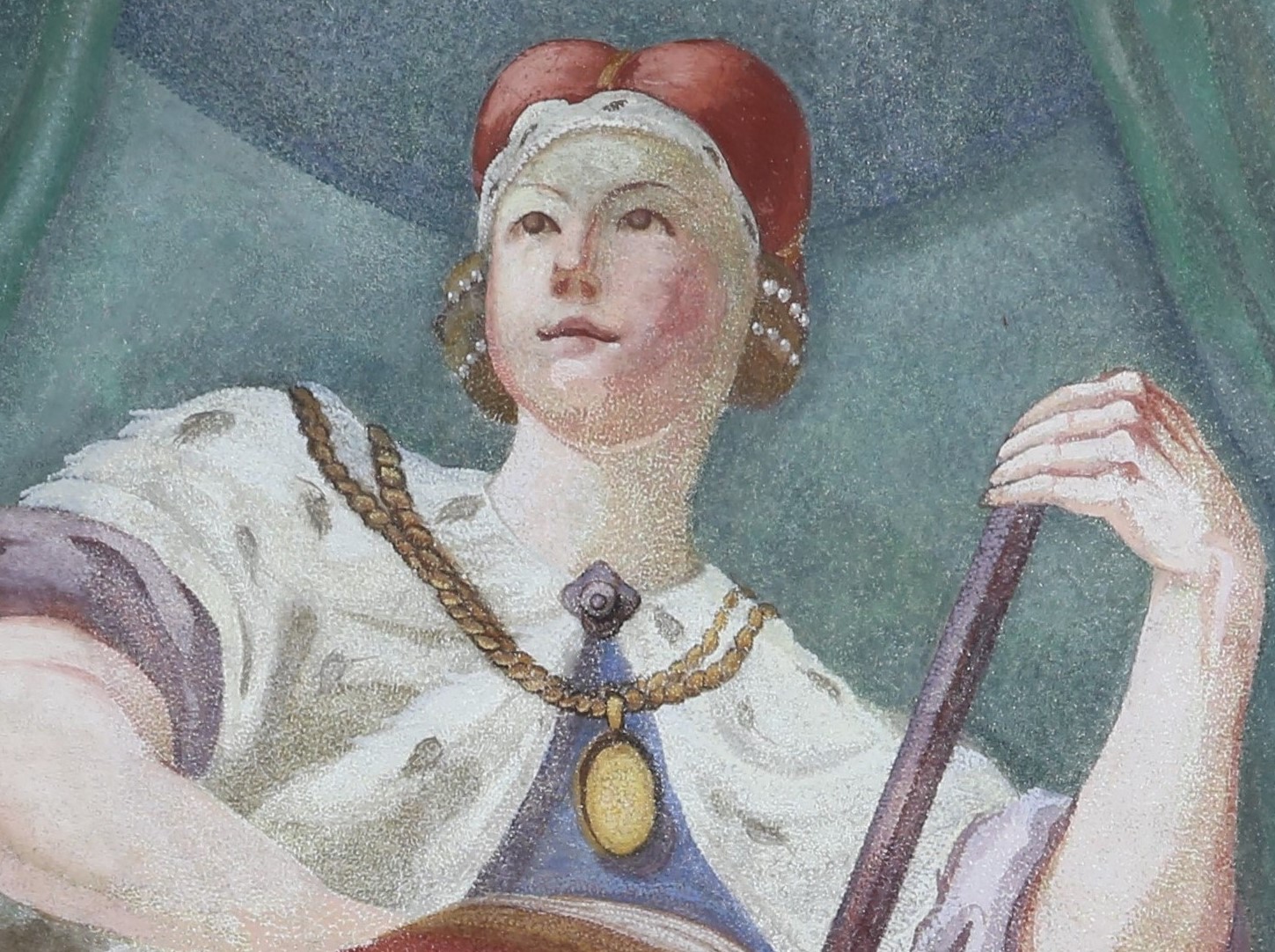
The matroneum
The restoration of the musical gallery began in the last days of February in 2017. The very first day of the renovation brought a surprise. A small piece of paper with the text written in German was found during the dismantlement of the balustrade which adorned the front of the gallery. Several days of investigation led to some pretty interesting findings.

At that time, Joseph Langer supervised the restoration of the Leopoldine Hall. This renovation work was carried out because of the upcoming centenary of the foundation of the State University in Wrocław. The University was established in 1811, after the merge of the Catholic “Leopoldina” and the Protestant Viadrina University located in Frankfurt (Oder). It seems very likely that that was the time when the decision to spare no gold was made. During the post-war restoration work, the losses in gold were filled with gold paint. Probably nobody suspected that the decoration is not original. Now – by the decision of the conservation committee – it was decided to return the balustrade to its original appearance, leaving many elements in ivory. The gold leaf was applied only where it was originally located, that is, in the plant ornaments.


The painting above the vault also concealed some secrets. Among many other surprises was the discovery of a book that “got lost” in the previous restoration work. The book lay on the lap of Silesia – the female personification of the Silesia region. The restorers found the position of Silesia’s right hand quite unnatural and that gave them a reason to suspect that something was missing. Moreover, the painting was largely a reconstruction so it was necessary to look for an answer in the very modest collection of iconographic materials. The suspicions turned out to be justified. Originally, Silesia held an open book on her lap and now the book has been returned to her.

This putto holds a tray on which there are two books (presumably the privileges granted to the University by the emperor). The restorers decided to respect the choice made by the author of the paintings in the Leopoldine Hall and not to remove the sixth toe. What is interesting is the fact that Handke’s putto not only has an extra toe but also misses a head. Theoretically, it is hidden behind the tray but it has to be admitted that at first sight the two putti next to each other seem to have one head…

Even though a restorer of works of art can often be seen holding a brush, his or her work slightly differs from the work of a “regular” painter. All the elements of the restored painting are made from scratch but the way of doing that is very characteristic. The technique is called “pointillism” and it consists of painting tiny dots next to each other. This method, which is completely unrecognisable from a distance of more than several dozen centimetres, makes it possible to distinguish between the original elements of the painting and the reconstructed ones with the unaided eye. How many dots did the restorers paint on the vault above the gallery? Probably billions…
It can be noticed in the picture presenting Silesia how many elements of the painting required restoration and applying the “pointillism” technique.




